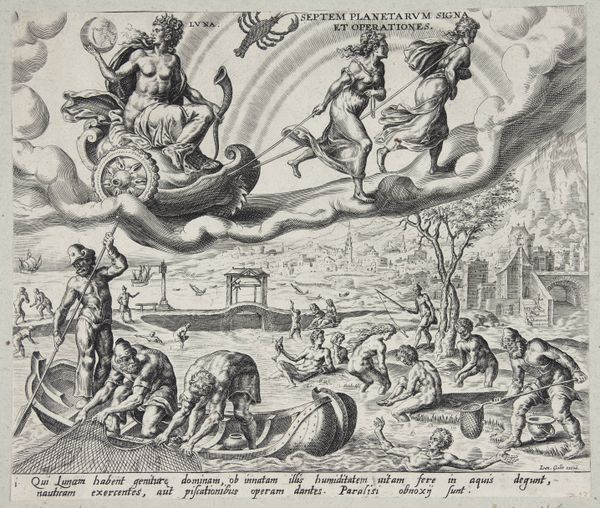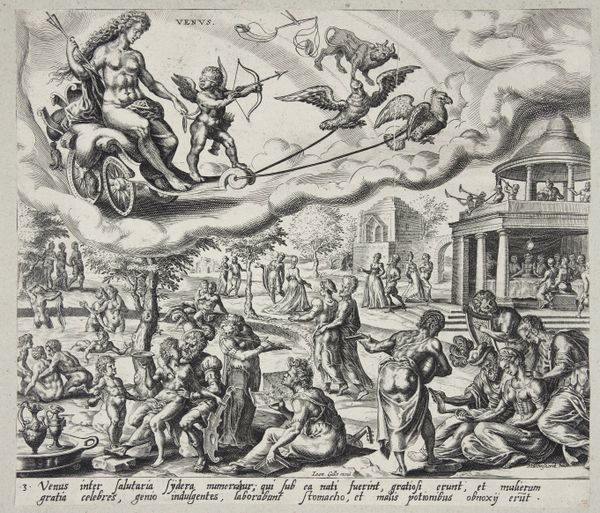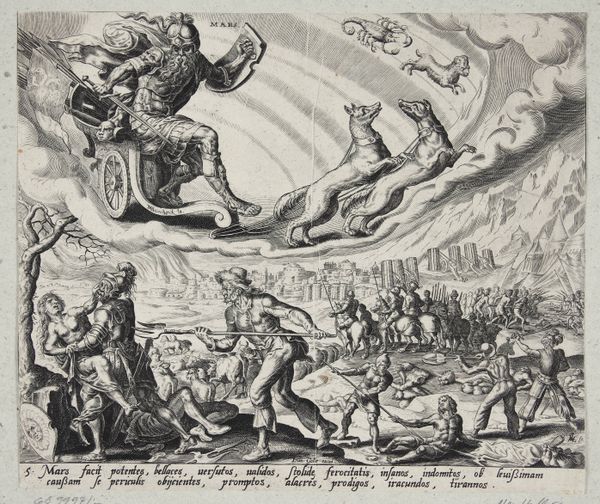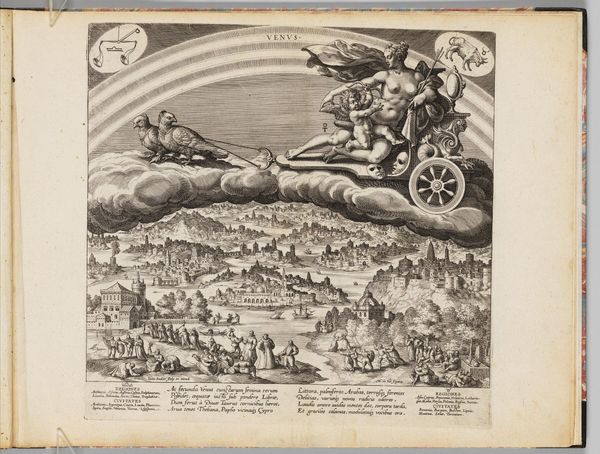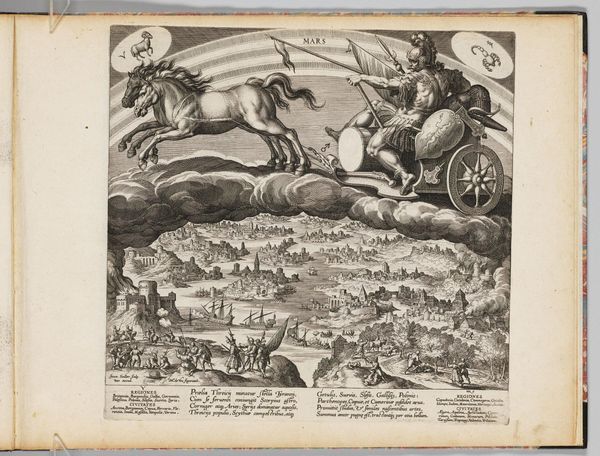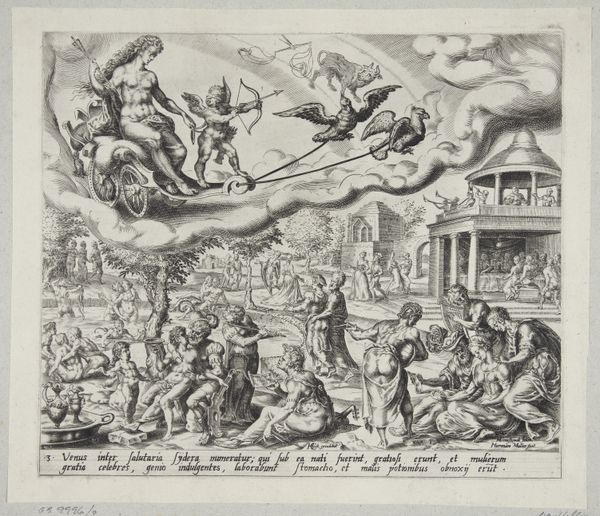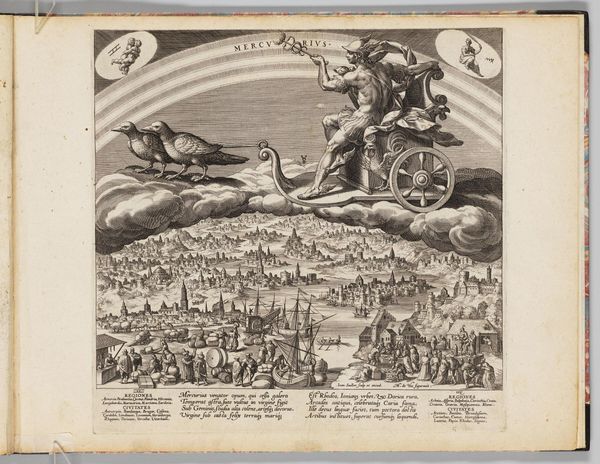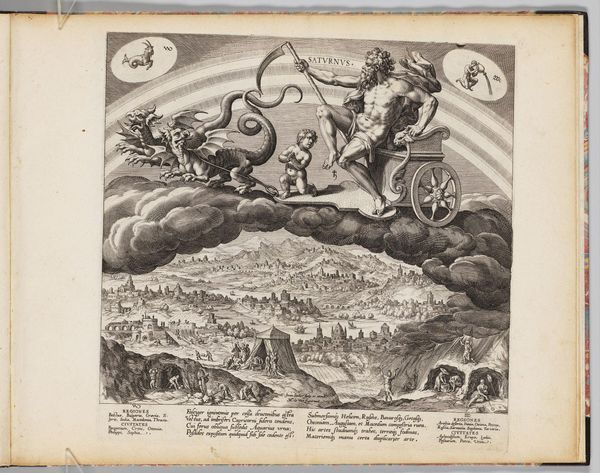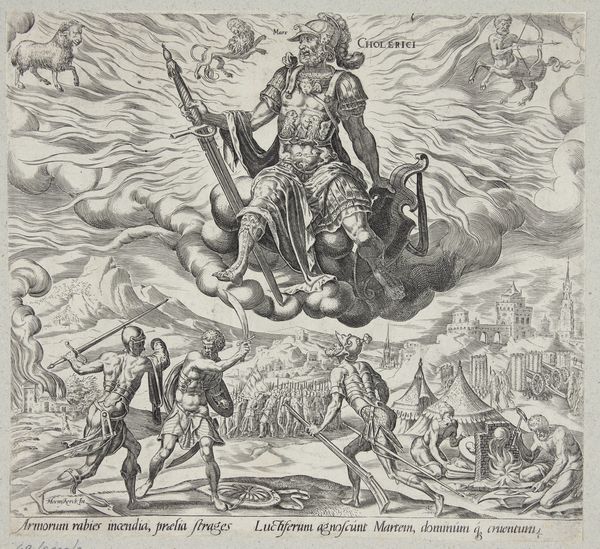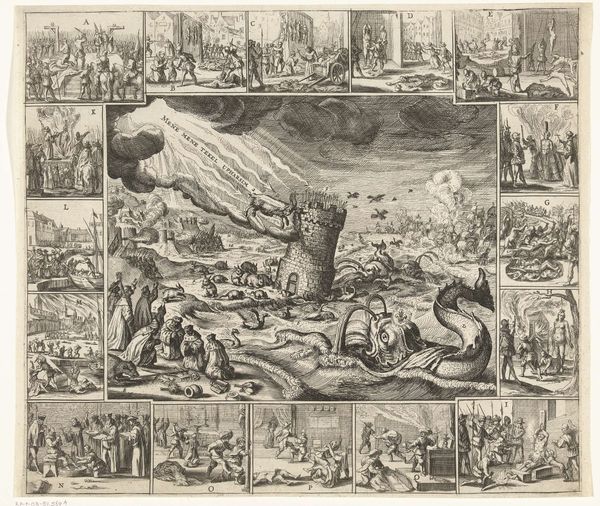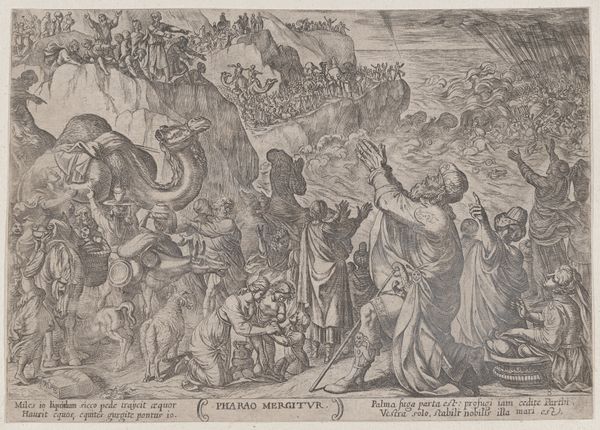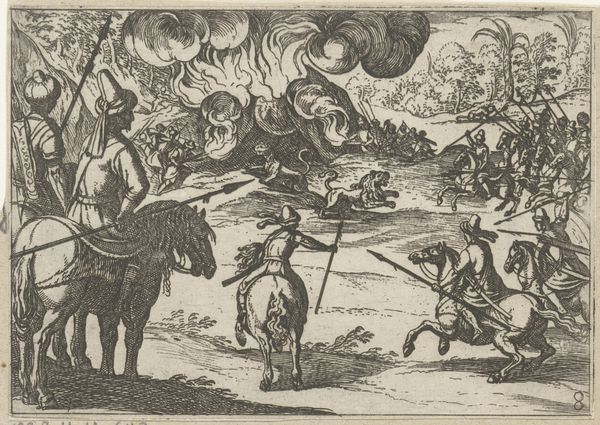
print, engraving
#
allegory
# print
#
landscape
#
figuration
#
history-painting
#
engraving
Dimensions: 239 mm (height) x 277 mm (width) (monteringsmaal), 214 mm (height) x 250 mm (width) (plademaal)
Harmen Jansz. Muller created this engraving, “Luna, the moon,” sometime in the late 16th or early 17th century. Muller was working in a Northern European intellectual milieu steeped in both classical and Christian traditions. Here, the Roman goddess Luna is figured as a powerful, bare-breasted woman seated in a chariot and holding a sphere. In this print, Luna presides over the element of water and those whose livelihoods depend upon it. Below Luna, in the lower register, men work and relax by the water. The prominence of Luna and her dominion over the seas speaks to the economic importance of maritime activities in the Netherlands. Consider how this image participates in the history of representing labor and the gendered division of it; the working men below are overseen by a female deity. This gendered power dynamic raises fascinating questions about the relationship between labor, class, and gender in early modern Europe.
Comments
No comments
Be the first to comment and join the conversation on the ultimate creative platform.
